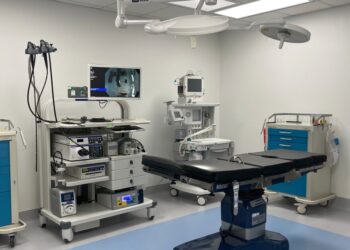ANSWER: Facial paralysis occurs when you cannot move some or all of the facial muscles. It can affect one or both sides of the face. Facial paralysis can disrupt eye closure, the smile and lower lip movement. It can cause asymmetrical facial muscle tone resulting in a sagging face. Though many people think of facial drooping as a sign of stroke, it can be among the first signs of facial paralysis, which is rare among children. When facial paralysis occurs in children, it impairs a child’s ability to move their facial muscles and show facial expression.
It is essential to evaluate facial paralysis promptly as the cause of the paralysis informs the treatment approach. While some children are born with facial paralysis because of a developmental or congenital problem, it also can result from trauma, a tumor or another issue.
To diagnose the underlying reason for the paralysis, patients undergo a comprehensive workup, including clinical examinations and imaging. Electromyography (EMG) is a type of imaging used to confirm the presence of nerve damage and determine its severity. An MRI or CT scan may be performed to rule out whether there are sources of pressure on the facial nerve, such as a tumor or skull fracture, that could be causing the paralysis.
Treatment
A treatment plan is developed based on the diagnosis and the child’s age. Treating facial paralysis does not always involve surgery and can range from offering physical therapy to injecting Botox to weaken other parts of the face to achieve symmetry. If surgery is the best treatment option for a patient, there are a few innovative…
Read the full article here







